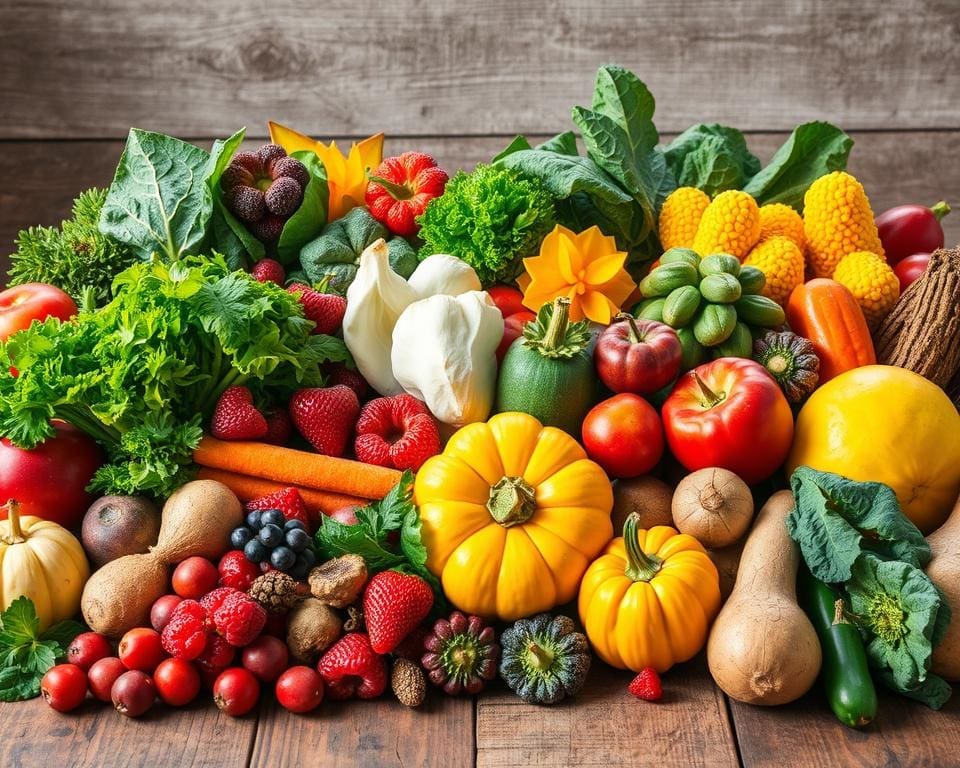Embracing seasonal eating is an inspiring journey that connects us with nature’s rhythms while enhancing our overall well-being. By enjoying fruits and vegetables at their peak ripeness, we unlock not only superior flavour but also the remarkable nutritional value of seasonal produce. Research indicates that seasonal foods, harvested at just the right moment, often possess higher levels of vitamins and nutrients, making the benefits of seasonal eating truly profound. This approach nurtures not just our bodies, but also supports local farmers and strengthens community ties, ultimately paving the way for a more sustainable food system.
By aligning our diets with seasonal cycles, we can significantly reduce the carbon footprint associated with transporting food over long distances. Make the nourishing choice to eat with the seasons and experience a vibrant, healthful lifestyle filled with the vibrant colours and flavours that nature intended.
Understanding the Benefits of Seasonal Eating
Exploring the benefits of seasonal eating reveals a wealth of advantages that extend beyond just taste. Eating in accordance with the seasons enhances nutritional value and supports sustainable practices within local communities.
Enhancing Nutritional Value
Seasonal fruits and vegetables often contain higher levels of nutrients compared to those shipped long distances. Fresh produce not only contributes to a more balanced diet but also plays a critical role in addressing nutrient deficiencies. The vibrancy and flavour of seasonal offerings often indicate greater antioxidant content, significantly benefiting overall wellness.
Supporting Local Farmers and Communities
By choosing seasonal foods, consumers engage in supporting local farmers whose livelihoods depend on sustainable agriculture. This choice fosters strong community ties, creating a shared responsibility for the local economy and environment. Visiting farmers’ markets or joining community-supported agriculture initiatives allows individuals to connect with those who grow their food, promoting respect and stewardship for the land.
Environmental Impact and Sustainability
Seasonal eating significantly reduces the carbon footprint linked with food transportation and storage. Emphasising locally grown crops encourages biodiversity, allowing varied species to thrive within their ecosystems. Moreover, sustainable farming practices enhance the preservation of local flora and fauna while minimising reliance on harmful pesticides. This holistic approach ultimately nourishes the earth for future generations.

Seasonal Eating for Maximum Nutrition: A Guide to Seasonal Fruits and Vegetables
Embracing seasonal eating presents a wonderful opportunity to savour the unique flavours of each season. This guide explores how to select the best seasonal foods, adapt your diet throughout the year, and creatively incorporate seasonal produce into your meals.
Choosing the Best Seasonal Foods
To truly appreciate seasonal fruits and vegetables, researching what is available in your region is essential. Local agricultural organisations often provide helpful websites or apps featuring insights on what is in season. By using seasonal charts, you can effortlessly choose items that are at their peak. For instance, summer brings delightful strawberries and peas, while autumn introduces comforting pumpkins and squashes. Winter offers hearty greens that can brighten up any dish.
How to Eat Seasonally in Different Seasons
Making dietary adjustments with the changing seasons is straightforward with a bit of planning. In spring, focus on incorporating tender greens and radishes into your meals. Summer can be filled with refreshing salads featuring tomatoes and cucumbers, while autumn’s roots and squashes lend themselves beautifully to warming dishes. In winter, hearty vegetables can be enjoyed in stews or roasted for deep flavours. Seasonal recipes serve as an excellent source of inspiration to keep meals vibrant and exciting.
Incorporating Seasonal Produce into Your Meals
Meal planning centred around seasonal ingredients enriches your culinary experience and adds much-needed variety. Consider incorporating seasonal produce in your weekly menus to celebrate the diverse flavours and colours throughout the year. Experimenting with new cooking methods or preparing batch meals with preserved seasonal items like jams, pickles, or frozen fruits and vegetables can ensure you enjoy these delights later. This approach optimises the nutritional value of meals while saving time throughout the year.
Seasonal Meal Planning: Tips for Success
Embracing seasonal meal planning can significantly enhance your cooking habits and overall diet. To begin, create a meal plan that focusses on variety, colour, and nutrition. This not only makes your meals more visually appealing but also ensures a well-rounded intake of nutrients. Scheduling shopping trips to local farms or markets allows you to select fresh produce and encourages you to experiment with new, exciting foods.
A practical approach involves utilising a calendar to keep track of what is in season. This will help you incorporate these ingredients into your weekly menus, aligning your meals with what nature offers throughout the year. Exploring recipes that highlight seasonal produce can inject freshness into your cooking routine as well as provide inspiration to dine healthily. Delve into these seasonal eating tips to make your meal preparation an engaging experience.
Moreover, building connections with local producers offers a wealth of knowledge concerning the benefits and proper storage of seasonal foods. This not only extends the life of your ingredients but also enriches your understanding of how to eat seasonally. Adopting these seasonal meal planning strategies will empower you to create a more nourishing and vibrant diet, truly celebrating the flavours of each season.









